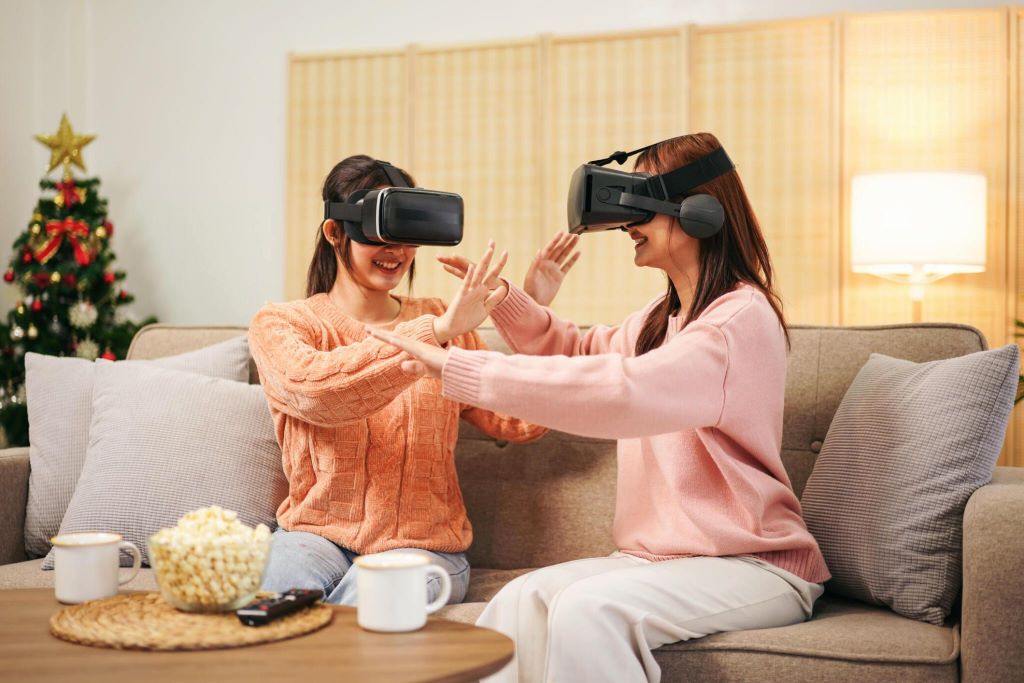
Oculus Quest 3 Lenses: A Glimpse into the Future of Virtual Reality Optics
The virtual reality (VR) landscape is constantly evolving, and Oculus Quest 3 stands at the forefront of this technological revolution. One of the key elements contributing to its immersive experience is the advanced optics integrated into its lenses.
In this article, we will delve into the intricacies of Oculus Quest 3 lenses, exploring the innovative features that promise to redefine the future of VR optics.
The Evolution of Oculus Quest Optics
Virtual reality has undergone a remarkable evolution, and the Oculus Quest series stands as a testament to the continuous innovation within the industry. The optics of the Oculus Quest, from its initial iteration to the cutting-edge Oculus Quest 3, have undergone a transformative journey.
From Oculus Quest to Oculus Quest 3
The Oculus Quest is a line of all-in-one virtual reality (VR) headsets developed by Oculus, a subsidiary of Meta (formerly Facebook). The Quest series is known for its standalone nature, meaning it doesn’t require a PC or external sensors for tracking.
Understanding the Necessity for Innovation
As technology advances, so too must the optics within the Oculus Quest series, ensuring users are immersed in increasingly realistic and visually stunning virtual environments. Upgrades in lens design, resolution, and field of view contribute to heightened visual fidelity, enabling users to engage with virtual worlds in ways that mirror or surpass their real-life counterparts.

Unpacking Oculus Quest 3 Lens Technology
Oculus Quest 3 takes a giant leap forward in virtual reality immersion, largely owing to its state-of-the-art lens technology. The intricacies of Oculus Quest 3 lenses play a pivotal role in delivering a visually stunning and comfortable experience for users.
High-Resolution Displays: Seeing Beyond the Pixels
High-resolution displays in virtual reality, particularly within the Oculus Quest series, mark a significant leap forward in visual immersion, allowing users to transcend the limitations of pixelated experiences.
These cutting-edge displays redefine the boundaries of clarity, presenting a visual landscape where the lines between the virtual and real worlds blur. With increased pixel density, finer details come to life, mitigating the notorious “screen door effect” and enhancing overall image quality.
Field of View (FoV): Expanding the Virtual Horizon
The expansion of the Field of View (FoV) in virtual reality, exemplified by advancements in the Oculus Quest series, represents a pivotal stride towards a more immersive and encompassing digital experience.
A widened FoV extends the virtual horizon, enabling users to perceive their surroundings in a manner that closely aligns with natural human vision.
Anti-Reflective Coatings: Enhancing Visual Clarity
These coatings play a crucial role in minimizing unwanted glare and reflections, ensuring that users can fully immerse themselves in virtual environments without distractions.
By reducing light reflections on the headset’s lenses, anti-reflective coatings contribute to a clearer, more vivid display, allowing users to focus on the content with minimal interference.
Optical Innovations and Challenges
Oculus Quest 3 lenses bring forth a wave of optical innovations that enhance the virtual reality experience, yet they are not without their share of challenges. Navigating through these innovations and addressing potential hurdles is crucial for a seamless VR encounter.

Adaptive Focus: Mimicking the Human Eye
The integration of adaptive focus technology in Oculus Quest optics represents a groundbreaking advancement that mimics the dynamic focusing capabilities of the human eye.
This innovation aims to replicate the natural ability of the eye to adjust its focus based on the distance of the viewed object. By incorporating adaptive focus mechanisms into the VR headset, Oculus Quest strives to enhance visual comfort and realism.
Addressing the Challenge of God Rays
Addressing the challenge of “god rays” has been a focal point in the ongoing development of Oculus Quest optics. God rays, also known as lens flares or glare, are artifacts caused by light scattering within the headset’s lenses, leading to streaks or rays emanating from bright objects in a dark background.
Recognizing the impact on visual quality and user experience, Oculus Quest has implemented various strategies to mitigate god rays.
User Experience and Beyond
The impact of Oculus Quest 3 lenses extends far beyond the technical realm, significantly shaping user experiences across diverse applications. From immersive gaming environments to educational settings, the lenses play a pivotal role in elevating the overall user engagement.
Immersive Gaming: Oculus Quest 3 Lenses in Action
The Oculus Quest 3 lenses enhance immersive gaming. They provide users with a visual experience beyond traditional boundaries. The device incorporates advanced lens technology. It aims for crystal-clear graphics, vibrant colors, and minimal distortions. The goal is full immersion in the virtual worlds gamers explore.
Educational Applications: A Clearer Path to Learning
The enhanced visual clarity and focus provided by these lenses create a clearer path to learning in virtual environments. Educational content becomes more engaging and informative as students can interact with realistic simulations, explore historical settings, or dissect complex concepts with unprecedented clarity.

The Future of VR Optics: Oculus Quest 3 as a Trailblazer
As we conclude, we’ll discuss the implications of Oculus Quest 3 lens technology on the future of VR optics. How might these innovations shape the development of future VR headsets, and what can users anticipate in the next wave of virtual reality experiences?
Overcoming the Challenge of Chromatic Aberration
The Oculus Quest 3 minimizes chromatic aberration through specially designed lenses. These lenses use coatings, materials, and optical configurations. They collaborate to correct light dispersion, ensuring accurate color representation and reducing visual artifacts associated with chromatic aberration.
Enhanced Durability and Longevity
The Oculus Quest 3 incorporates durable materials and improved construction methods to withstand the rigors of regular use. Reinforced components, such as the head strap, frame, and controller, contribute to the overall durability of the device. Additionally, advancements in heat management technologies ensure that the headset operates efficiently over extended periods, reducing the risk of overheating and potential long-term damage.
Closing Thoughts
In this comprehensive exploration of Oculus Quest 3 lenses, we’ve uncovered the technological marvels that make this VR headset a front-runner in the realm of immersive experiences.
The evolution of VR optics will likely continue to shape the way we perceive and interact with virtual worlds, with Oculus Quest 3 setting a high standard for the future of virtual reality.


